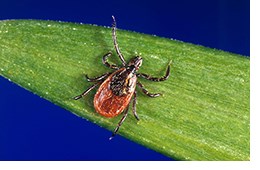Public Health Sudbury & Districts reports that it has received laboratory results confirming an adult from the Manitoulin District has tested positive for Lyme disease.
“Although the risk of contracting Lyme disease remains low, people need to protect themselves when enjoying the outdoors,” the health unit said in a news release.
Lyme disease is caused by a bacteria that infects blacklegged ticks. The breed of tick is not common to the Sudbury or Manitoulin districts, Public Health said, but in recent years several have been located in the region. More commonly, the ticks are found in rural areas along the north shores of Lake Erie, Lake Ontario, Lake Superior, and the St. Lawrence River, as well as in the Rainy River area of northwestern Ontario.
“People enjoying the outdoors need to check for ticks immediately after activities like gardening or hiking. This is one of the simplest ways you can protect yourself from Lyme disease,” said Adam Ranger, an environmental support officer with Public Health Sudbury & Districts, in a news release.
Blacklegged ticks do not jump or fly. They wait on grass and bushes for animals or humans to brush against the vegetation. Ticks vary in size and colour and can be hard to see until they are full of blood.
To prevent tick bites:
Avoid walking in tall grass.
- Make sure yards are kept clear of debris and overgrown vegetation, grass, bushes, and trees.
- Keep wood piles and bird feeders away from homes.
- Wear a long-sleeved, light-coloured shirt, pants, and closed-toe shoes.
- Use insect repellents that are approved by Health Canada and follow the application recommendations on the package.
- Do a tick check.
- Take a shower after outdoor activities to help wash off ticks that have not yet attached themselves to the skin.
If you find a tick attached to you or someone else:
- Use fine-tipped tweezers to grab the tick close to the skin and gently pull straight up.
- Wash the area with soap and water.
- Put the tick in a dry container and bring it to your local public health unit to be sent for identification and testing for Lyme disease.
- Follow up with your health care provider to determine if you need treatment, especially if the tick has been attached for more than 24 hours. Lyme disease is treated with antibiotics.
If left untreated, Lyme disease can cause serious complications to the heart, joints, and nervous system. A common symptom of infection is a characteristic red rash around the area of the bite that resembles a bull’s eye, as well as fever, headache, muscle and joint pain, fatigue, stiff neck and swollen glands.



